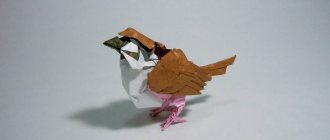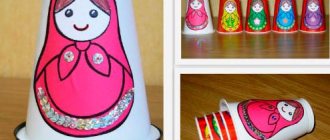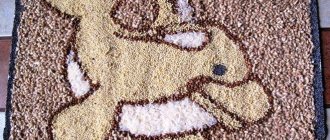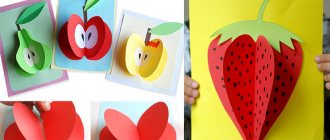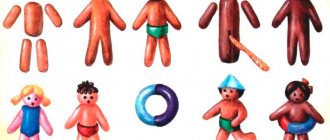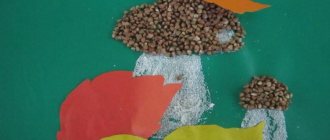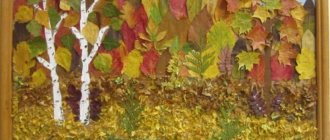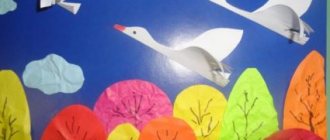Hello! Top 3D Shop is with you and in this article we introduce you to the technologies, equipment, materials and techniques used in creating kindergarten layouts, as well as practical examples of making such layouts.
Read more in the article.
About company
Top 3D Shop is one of the largest Russian companies selling high-tech equipment for 3D printing, 3D scanning, CNC machines and industrial robots.
Comprehensive customer service and a wide range of additional services have allowed the company to become one of the leading players in this market. Read about the history of Top 3D Shop in the article “How I built a successful 3D printing business.”
Our clients include companies such as:
| European Parliament | Moscow Aviation Institute | Novo Nordisk | Skolkovo | Gazpromneft-Development |
Top 3D Shop Service Department
Experienced employees with specialized education from the service department of the Top 3D Shop company perform work on the production of three-dimensional models of any objects, as well as 3D printing, 3D scanning and production of products on CNC milling and laser machines. Services are provided in Moscow and St. Petersburg.
Read more about this in the article “3D technologies in architectural layout.”
Craft "Forest"
To complete this craft, you need to try hard. But the result is worth it.
In progress:
- prepare 4 spruce or pine cones: 2 are painted brown, and 2 are painted green;
- make the base of the craft, for which a thin layer of cotton wool is glued onto a sheet of thick cardboard (this will be snow);
- 3 rectangles are cut out of thick brown cardboard and cylinders are made from them (tree trunks and stumps);
- secure the workpieces on the prepared base;
- The legs, muzzle and antlers of a deer are made from solid wire, wrapped in brown paper or thread of the same color and attached to the body;
- The head and wings of an owl are made from white paper and attached to the body;
- green cones are attached to the trunks - these will be Christmas trees.
You can simplify the process by installing Christmas trees without “trunks”. It will also turn out beautiful.
Creation of layouts of kindergartens of any complexity
Preschools, as separate buildings, first appeared in Germany at the beginning of the nineteenth century. The creator of this concept was the German educator and theorist Friedrich Froebel, and at the end of the 19th century, Rudolf Steiner, an Austrian philosopher and architect, discovered the influence of the architectural environment on the psychological state of the child.
Currently, in Russia, the design of preschool institutions is aimed, first of all, at fulfilling the exclusively utilitarian function of temporarily placing children in a strictly controlled environment, therefore the block principle of kindergarten architecture has remained unchanged since Soviet times.
In other countries, for many years, a fundamentally different approach has been used: the buildings of preschool institutions are considered as an intermediary for the perception of the outside world and a catalyst for the social adaptation of children. The kindergarten project should be aimed at creating an environment that develops the mental, physical and creative abilities of the child.
In the eighties, architects came to the conclusion that preschool institutions were a completely new type of building that required a special approach to design. At the same time, four basic principles for preschool design were developed.
The first approach is metaphorical. A good example is the KITA kindergarten project in Frankfurt. Architect Christophe Makler believed that there was no such thing as architecture for children. There are no so-called “childish elements” in his project. He used the metaphor of a small town, where the classrooms are a kind of terraced houses and the corridor acts as a street.
Source: archdaily.com
The second approach is organic. In his kindergarten project, the Austrian architect Hundertwasser tried to establish a connection between man and nature through architectural solutions.
Source: needpix.com
The third approach is the inclusion of late modern structural elements into the project. According to architects who follow this principle, a building is just a frame, a neutral shell, and the substantive elements must be placed inside. An example of such a design solution is the kindergarten of architect Wilson.
Source: archdaily.com
The fourth method, based on Judith Seaver's study "Philosophy of the Educational Approach", argues that the design of preschools should be directly linked to the educational program, combining structured activities, such as planned activities, and unstructured ones, allowing the child to choose his own activities.
Source: archdaily.com
Based on numerous studies by psychologists and architects, principles have been determined for the design of preschool institutions that function as “giant play spaces” - with an open plan, child-friendly sizes of elements and secluded corners where the child can, if necessary, relax and be alone. An ecological approach to design aims to provide visual diversity in form, use parts of the building as play elements, transform boring walkways into integral parts of playgrounds and seamlessly integrate the building into the surrounding space.
Children, following their inner impulses, choose what they want to do. In this way, a permanent active space is formed without “idle” places.
When designing kindergartens and preschool institutions, it is necessary to create 3D models of buildings and surrounding areas. In addition to the design and presentation functions performed by the model during construction, it can also be used in the institution itself, for example, to explain to children in an accessible playful way the escape routes in the event of any threats.
Possibilities
Three-dimensional layout when designing modern preschool institutions allows architects to create an open layout of spaces and abandon traditional corridors.
In large areas, with the help of movable partitions, different floor levels, different floor coverings and other methods, dynamically changing zones can be created, both for relaxation and for active games. Psychologists have come to the conclusion that it is necessary to take into account the scale of the surrounding space for the child: windows at the level of children’s eyes, signs, decorative elements of the appropriate height, and the like.
It’s the layouts that help you design it all correctly.
Advantages compared to manual production
Rapid 3D printing and CNC milling are the latest ways to use 3D processes in architectural modeling. Three-dimensional plans, sectional structures, models of buildings and entire cities - realistic scaled models of a wide range of sizes can be quickly produced and changed, depending on the current task.
About the advantages of using additive technologies in 3D prototyping, features of working with Top 3D Shop, production times, technologies used, ordering procedures, equipment and materials used, read the article “3D technologies in architectural prototyping”.
Smeshariki from CDs
To complete this craft, you will need an old disk, colored paper, markers and the artistic abilities of your parents.
In the process of work, you just need to draw and cut out the face, arms and legs of the cartoon character about Smeshariki, and then glue them in the appropriate places to the disk.
If you attach a loop of thread to such a craft, you can use it as a Christmas tree decoration.
This is just a small part of the ideas. There are a lot of options for DIY crafts for kindergarten - birds, animals, heroes of your favorite fairy tales and cartoons. You just need to choose the one that suits you and show a little imagination.
Practical examples
Bilingual Kindergarten of East China Normal University, Antiing City, China
Task
Source: arch2o.com
Antin is a modern suburb located between northwestern Shanghai and Suzhou Huaqiao. The kindergarten, located in a new residential area south of the Antin metro station on line 11, is one of the first objects of the complex.
The modern concept of Chinese urban planning - the unity of society and nature - also and primarily concerns educational institutions, and is to enable children to perceive and learn about the world, while absorbing and preserving folk traditions.
The Scenic Architecture Office company had a task: to place it on a small site of 7400 sq.m. a kindergarten for 15 children's groups, combining modern principles with traditional ones.
Solution
Source: arch2o.com
The courtyard in Chinese architecture is not only a tradition of physical space, but also the core of emotion and communication. This helps people maintain family cohesion and strengthen connections with friends and relatives. But this legacy today is a pipe dream for most citizens.
To evaluate possible architectural solutions to this problem, a 3D model of the new kindergarten was printed.
Source: arch2o.com
Kindergartens need fencing in their yards. Following the sloping western boundary of the site, hexagonal plots of regular and irregular shapes, modified to suit the landscape, were designed to pave the area to receive maximum sunlight from the west, south and east. The honeycomb composition better suits the sloping border while eliminating the restrictive traditional symmetry.
Source: arch2o.com
The end result was an unfinished hexagon for the courtyard. Three of the six sides were designed identically, for a more flexible combination of sunlight needs and functionality.
Source: arch2o.com
Entering the gate, children and teachers find themselves in a courtyard with flowers and herbs on different levels, move in zigzag corridors along the edges of the hexagon, pass through lobbies and common spaces, and walk past different classrooms along diverging and merging paths.
Source: arch2o.com
Each two classrooms have a common exit to the courtyard and direct access from the street. After passing through the courtyard, children can resume their journey to other areas including the library, music room, art room, cafeteria, multi-purpose room, small farm and other classrooms.
Source: arch2o.com
Collective classroom activities take place around a column in the center of the room, while teams or individual children can use raised spaces along windows and walls to read, write or care for their small plants.
Kindergarten in Copenhagen, Denmark, Cobe company
Task
Source: cobe.dk
The city of Copenhagen commissioned the architectural company Cobe to design a kindergarten for 160 children under 6 years old with an area of 1950 m². The building needed to be located in the heart of a vibrant historical district. In this lush green garden village, among beautiful red brick houses, Forfatterhuset was to be built - a kindergarten organized around large mature trees, like houseplants on a terrace.
Solution
Source: cobe.dk
Conceptual model showing how the facade surrounds the buildings and existing trees on the site. De Gamles By is a green oasis in the city. The area consists of red brick buildings set on a lush carpet of green. One of the conditions was to create a functional and comfortable building without disturbing the appearance of the area.
Source: cobe.dk
As well as being a community for seniors, it is already home to five nursery schools, vegetable gardens for a nearby public school, open space for a high school and a petting zoo.
Source: cobe.dk
The green area is divided into large and small garden areas, lively play areas, roof terraces and quiet alcoves. Forfatterhuset is both a playground and a building, a park and an institution. This is a whole children's world that needs to be discovered and explored.
Source: cobe.dk
The heart of the kindergarten is a vertical, bright space.
Source: cobe.dk
“This is a subtle art, adding new to old in a historic area. First and foremost, we wanted to understand the characteristics of the area, highlight them, but at the same time create something new and contrasting,” says Dan Stubbergaard, architect and founder of Cobe.
The project was shortlisted for the Mies van der Rohe 2015 award and became a finalist for the Architizer A+ 2015 award.
Application “Chicks in the nest”
To make this craft you will need cardboard, colored paper, cotton wool, glue, pencil and scissors.
In progress:
- draw parts of a tree – trunk and branches – on a sheet of brown paper;
- cut out the drawn parts and glue them onto a sheet of colored cardboard;
- Leaves are made from green paper and glued to the branches;
- For the nest, cut out a semicircle from brown paper and attach it to any tree branch. To imitate twigs and blades of grass, from which birds usually make nests, the same brown paper is cut into thin strips, folded in the shape of an accordion, unfolded and glued to the semicircle of the nest;
- form small cylinders from cotton wool - these will be chicks;
- cut out beaks and eyes from colored paper and attach them to the body;
- All that remains is to plant (glue) the chicks into the nest and the craft is ready.
The implementation of such an application can be completely entrusted to the baby, guiding his actions. You just need to take care of safety when working with scissors.
Opinion of Top 3D Shop specialists
The main task in 3D modeling of any children's institutions is to clearly show architects and clients the peculiarities of perception of the design of the building and internal spaces by both adults and children. The layout should also be able to quickly make changes to the project, since the main modern trend in the construction of such objects is to emphasize the concept of individuality and organically fit the structure into the surrounding space.
You can read more about the technologies used to create layouts in the article “Making a layout of a school of any complexity.”
